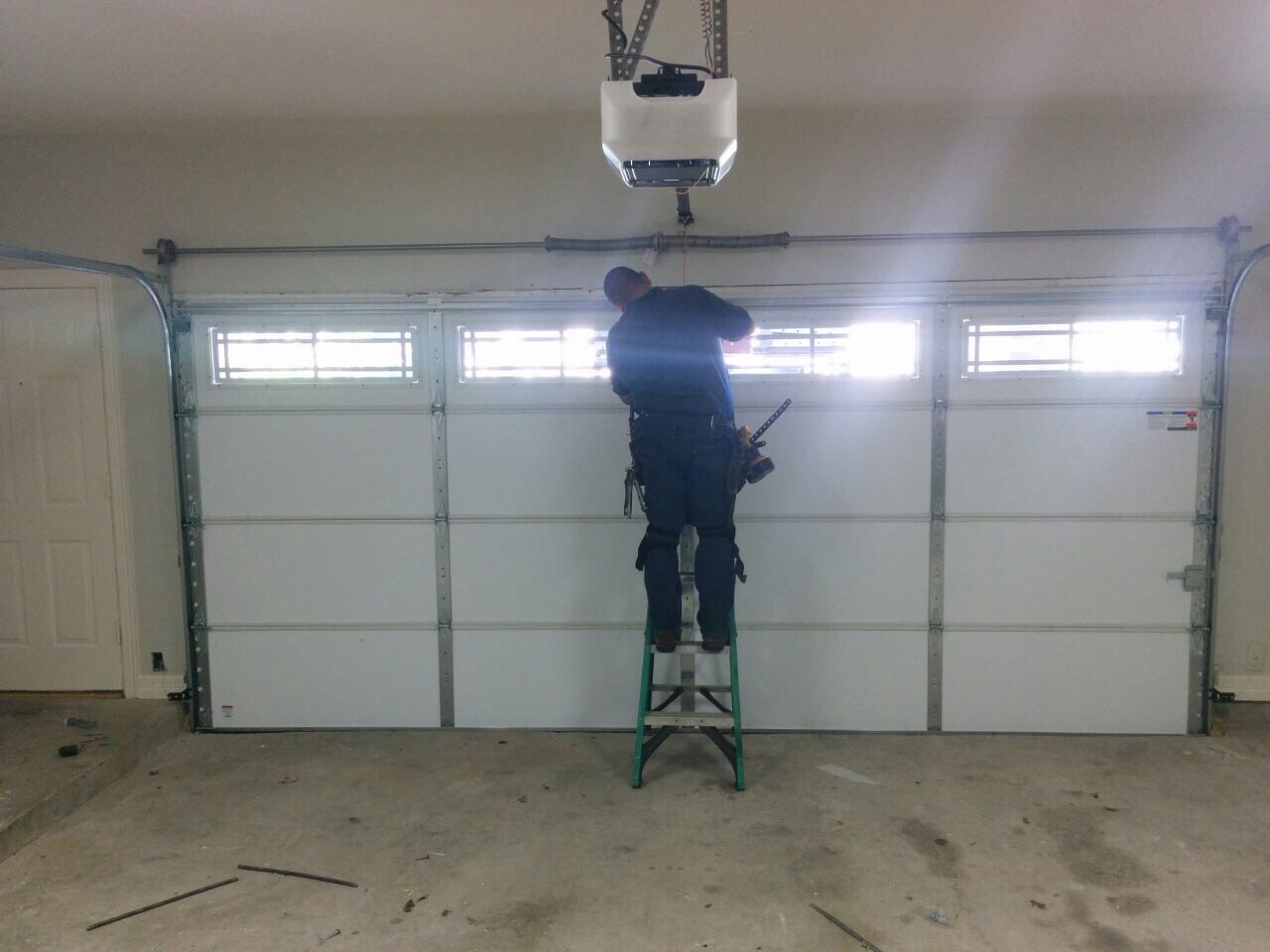Usual Garage Door Problems and Exactly How to Repair Them
Garage doors are vital for both safety and ease, yet they often offer a range of typical issues that can frustrate homeowners. While some issues may show up straightforward to settle, others may need an extra nuanced understanding of garage door auto mechanics.
Noisy Garage Door Procedure
A loud garage door procedure can be a significant resource of aggravation for property owners, usually suggesting underlying mechanical issues. Such interruptions might stem from various reasons, consisting of worn-out rollers, loose hardware, or inadequate lubrication. Determining the resource of the sound is crucial for reliable resolution.
Over time, these components can wear away, leading to grinding or squealing sounds as the door actions. Furthermore, loose bolts or screws in the door mechanism can develop rattling sounds throughout procedure.
Another adding factor is inadequate lubrication of the door's relocating components. Using a top quality lubricating substance to the tracks, springs, and rollers can considerably reduce friction and sound. Homeowners should execute this maintenance occasionally to preserve optimum performance.
Finally, the garage door opener may also produce noise due to its age or mechanical problems. If the sound lingers in spite of resolving various other variables, seeking advice from a professional for a comprehensive evaluation and possible repair may be necessary.
Door Will Not Open or Close
Experiencing a garage door that will not open or shut can be extremely discouraging and often signals a malfunction within the system. Numerous elements can add to this issue, and determining the root cause is essential for efficient resolution.

Following, inspect the safety sensors situated at the base of the door. These sensing units can end up being misaligned or blocked by debris, protecting against the door from operating properly. Clean the sensors with a soft towel and ensure they are aligned.
In addition, the garage door's interior parts ought to be assessed. Problems such as a broken spring, worn-out rollers, or a harmed opener can hinder motion. If any kind of elements show up to be harmed, it might be suggested to consult a professional for repair services.
Misaligned Tracks
(Tailored Options)Misaligned tracks can badly interrupt the smooth procedure of a garage door, bring about functional failings such as irregular movement or full immobilization. This concern usually arises due to a variety of elements, consisting of deterioration, unintended effects, or incorrect installment. When the tracks are misaligned, the rollers can not relocate openly, which not only strains the electric motor however additionally postures safety and security risks.
To identify imbalance, aesthetically check the tracks for voids or irregular spacing. If you notice any type of inconsistencies, it is critical to address the concern promptly - garage door service. Begin by loosening up the screws that secure the track to the wall, permitting adjustments. Very carefully tap the track back into its appropriate placement using a rubber mallet or a similar device, ensuring it is straight and degree.
When the placement is dealt with, retighten the screws to protect the track. For a much more permanent service, take into consideration reinforcing the tracks with added braces. Routine upkeep, including cleaning the tracks and making certain rollers are in great problem, can protect against future misalignments. By dealing with misaligned tracks without delay, you can bring back the performance of your garage door and boost its long life.
Broken Springs
Amongst the numerous parts of a garage door system, broken springtimes are just one of the most common issues that can substantially hamper its performance. Garage door springtimes are vital for stabilizing the weight of the door, permitting for smooth opening and closing. When a springtime breaks, it can cause a door that is challenging to run or, in many cases, completely unusable.
There are 2 main types of springtimes: torsion springtimes, which are mounted above the door, and expansion springs, located on either side. Indications of a broken springtime consist of a door that will not open up, a visible space in the spring, or a loud sound during procedure. Trying to run a garage door with a broken spring can trigger more damage to the door or the opener.
Fixing busted springtimes is not a do it yourself task; it calls for specialized tools and competence due to the high tension included. It is suggested to seek advice from an expert service technician who can safely change the springtimes and ensure the door is effectively stabilized. Normal upkeep and inspections can aid protect against springtime failings and prolong the lifespan of the garage door system.
Push-button Control Issues

The very first step is to check the batteries in the remote. Change them if they are weak or dead. If the remote still falls short to operate, check the garage door opener to make sure that its sensors are clean and unhampered. Dust, debris, or misalignment may prevent the signal transmission in between the remote and the opener.
Disturbance from various other digital devices can additionally hinder remote capability. Make sure that neighboring devices, such as cordless routers or cordless phones, are not creating disturbances. garage door service. If disturbance is thought, attempt relocating these tools further far from the garage door opener
In some cases, the remote may need to be reprogrammed. Consult the supplier's guidelines to reset the push-button control and integrate it with the garage door opener. If all else falls short and the remote continues to malfunction, take into consideration getting in touch with a specialist technician for a detailed inspection and prospective replacement of the remote or opener.
Verdict
(Affordable Excellence)In recap, typical garage door problems can considerably affect capability and security. Proactive upkeep and timely repair services can guarantee optimal efficiency and durability of garage doors.